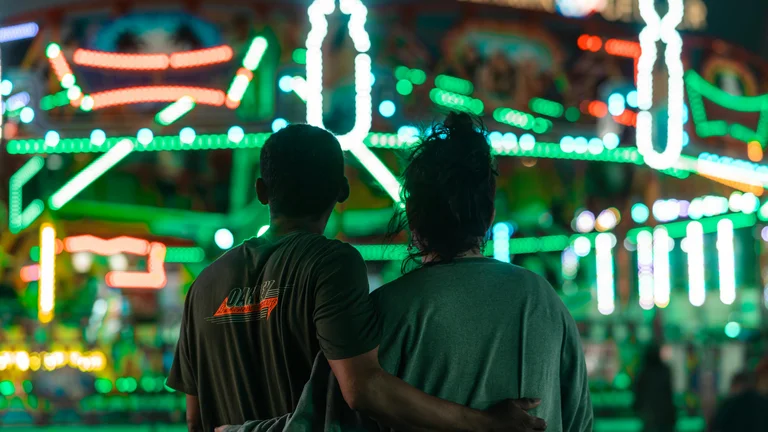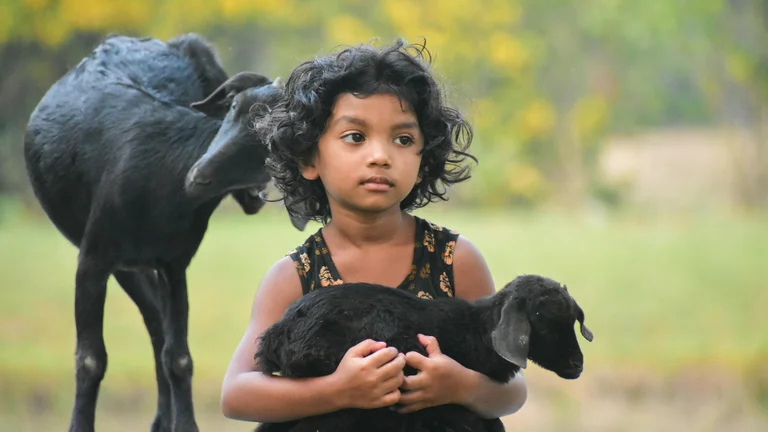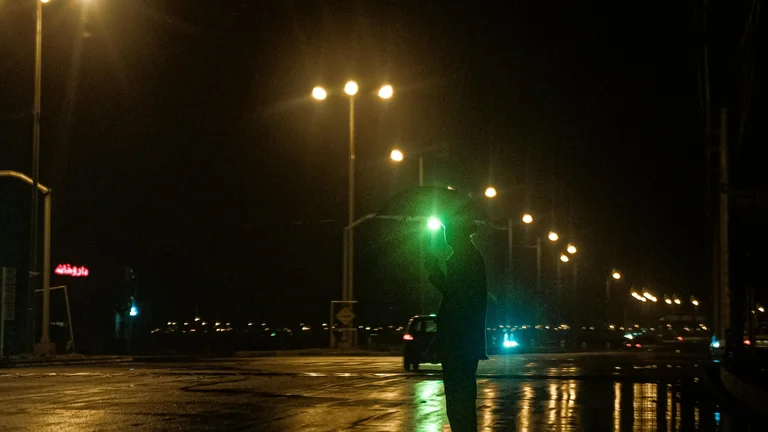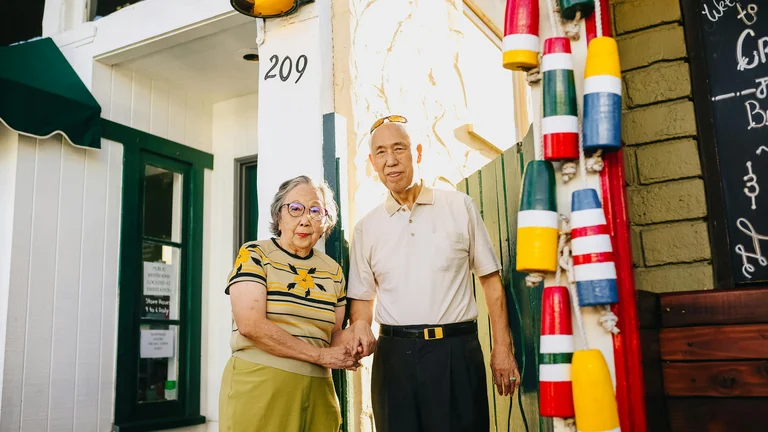
Amusement parks have served as quintessential settings for romantic encounters, dramatic turns, and pivotal character development moments throughout the history of Korean dramas (K-Dramas). Among these, dates set in amusement parks highlight an intersection of innocence, thrill, and emotional complexity, creating iconic scenes etched forever in viewers’ memories. These scenes transcend mere backdrop; they become symbolic landmarks that define the relationships, personalities, and narrative arcs of the characters involved. This detailed exploration into iconic amusement park dates in K-Dramas investigates their narrative significance, aesthetic appeal, and cultural impact, while identifying patterns and dissecting memorable moments from classic and contemporary series.
To understand the allure of amusement park dates in K-Dramas, one must first explore how the amusement park functions as a multidimensional space within Korean storytelling. These environments provide a microcosm for the ups and downs of romantic relationships, reflecting the mixture of happiness, tension, excitement, and vulnerability experienced by characters. The juxtaposition of colorful rides, playful games, and bright neon lights against the often complex emotional exchanges creates a layered reading experience for viewers.
The roller coaster itself is often a metaphorical device in K-Dramas — symbolizing the emotional highs and lows of the protagonists’ journey. By situating key moments on or near the rides, the shows invite audiences to empathize with the unpredictability of love, capturing feelings of exhilaration and fear in a single frame. Additionally, the shared experience of amusement park rides fosters intimacy between characters, often facilitating confessions, misunderstandings, or pivotal decisions. As a social setting, amusement parks also permit a range of interactions—from playful, lighthearted exchanges to deeply emotional confrontations.
One of the fundamental reasons amusement park dates remain iconic in K-Dramas is their universal relatability. For many young viewers, these scenes reflect their own idealized romantic experiences or evoke nostalgia for simpler times. The sensory overload of sights, sounds, and tactile experiences in amusement parks amplifies the impact of dialogue, expressions, and silent gestures, further rooting these moments in the cultural consciousness of K-Drama fans worldwide.
Examining specific instances provides concrete examples of this phenomenon. One landmark scene from the hit drama "Boys Over Flowers" features the protagonists going to an amusement park where the character dynamics and romantic tensions escalate dramatically. The brightly lit environment emphasizes contrasting character moods—joy, jealousy, confusion—all underscored by a backdrop of spinning carousels and heart-pounding rides. This particular scene has become emblematic of youthful turmoil and romance in K-Drama folklore.
Similarly, "Weightlifting Fairy Kim Bok-Joo" illustrates amusement park dates with an emphasis on playful banter and lighthearted courtship, capturing the innocence of first love amid laughter and shared thrills. The protagonists’ interactions at the park’s arcade games and Ferris wheel rides not only strengthen their bond but also reveal vulnerabilities and insecurities in a casual, relatable manner. The setting enhances the authenticity of their connection and grounds it in everyday experiences familiar to the target demographic.
Another dimension to analyze is the cinematographic approach employed during these amusement park dates. Directors often use colorful lighting, dynamic camera angles, and close-up shots to convey intimacy or suspense. Slow-motion sequences on the roller coaster, for example, can highlight a character’s internal emotional state by juxtaposing the external thrill with inner conflict. Additionally, sound design plays a critical role; the cacophony of laughter, music, and cheers blends with the dialogue to create an immersive atmosphere that accentuates key moments.
Amusement park scenes are not homogeneous; they vary widely depending on genre, narrative tone, and character arcs. Romantic comedies use amusement parks as venues for playful teasing, comedic mishaps, and blossoming attraction. Conversely, melodramas might depict an amusement park date fraught with heartbreak, misunderstandings, or bittersweet goodbyes, leveraging the park’s visual vibrancy to contrast with emotional pain. In thrillers or mystery-driven K-Dramas, amusement parks can become eerie locations where tension escalates beneath vibrant facades, adding layers of narrative complexity.
Given the prevalence of amusement park dates in K-Dramas, it is worth outlining the thematic elements most commonly associated with these scenes. The primary themes encompass youthful exuberance, vulnerability in romantic endeavors, social dynamics, and the bittersweet temporality of moments shared. The structure of these scenes typically oscillates between lighthearted fun and emotional revelation, allowing characters to either break down barriers or encounter obstacles.
Below is a table summarizing iconic K-Dramas with their respective amusement park date scenes, the thematic focus of each scene, and the narrative impact observed:
| Drama Title | Date Setting | Thematic Focus | Narrative Impact |
|---|---|---|---|
| Boys Over Flowers | Amusement Park & Roller Coaster | Youthful Turmoil, Jealousy, Confession | Turning point in relationship dynamics |
| Weightlifting Fairy Kim Bok-Joo | Arcade & Ferris Wheel Date | Innocence, Playfulness, First Love | Character bonding and vulnerability reveal |
| My Love From the Star | Theme Park Night Date | Otherworldly Romance, Mystery | Reinforces protagonist’s emotional conflict |
| Reply 1988 | Local Fairground Date | Nostalgia, Friendship, Emerging Romance | Enhances period setting and character growth |
| Strong Woman Do Bong Soon | Amusement Park Halloween Event | Playful Romance, Suspense Elements | Builds romantic tension amid thriller plot |
These examples illustrate the varied application of amusement park dates across diverse K-Drama genres, each enriching the plot and deepening viewer investment in unique ways. In "My Love From the Star," for instance, the amusement park setting at night carries a dreamy and almost surreal atmosphere, emphasizing the otherworldly nature of the lead characters’ relationship juxtaposed with the vibrancy of human experiences. The ambient lighting and backdrop of floating lanterns enhance the motif of ephemeral love and yearning, marking a significant shift in how the female lead perceives her enigmatic partner.
Detailed analysis of the character interactions within amusement park scenes reveals an underlying choreography of emotions expressed through subtle gestures, dialogue timing, and spatial proximity. From holding hands during a carousel ride to accidental brushes near game booths, each moment is carefully directed to maximize emotional resonance. The amusement park setting permits a natural, sometimes forced proximity between characters, facilitating development of tension or connection without overt exposition.
For example, in "Strong Woman Do Bong Soon," the Halloween-themed amusement park date not only adds festive energy but also intertwines with the thriller plot through suspenseful sequences. The bright, whimsical exterior contrasts starkly against the dark undertones of danger, allowing the romance to flourish amidst uncertainty. This layering enriches the viewing experience by balancing playful elements with narrative stakes, showcasing how amusement parks can accommodate complex emotion blends rather than simple romance tropes.
Furthermore, amusement park dates in K-Dramas often coincide with moments of transformation or revelation for the lead characters. The symbolism of rides—ascending heights, rapid descents, and spinning motions—aligns with characters’ emotional breakthroughs or setbacks. These visual metaphors are enhanced through recurring motifs such as holding onto someone tightly during a roller coaster drop, which can symbolize trust or fear, depending on the context of the scene. Such symbolism is rarely explicit but understood through cultural narratives and audience familiarity with the genre.
In addition to narrative function, amusement park dates exhibit distinctive aesthetic styles influenced by the era, production budget, and directorial intention. Classic K-Dramas might utilize more static shots focused on actors’ expressions amid the park environment, emphasizing romantic ideals of the time. Modern productions, however, often incorporate advanced filming techniques, vibrant color grading, drone shots, and dynamic editing to create immersive sequences that feel cinematic and visually impactful.
Examining the cultural context deepens appreciation of why amusement park dates hold such importance in K-Dramas. South Korea’s rapid urbanization and contemporary lifestyle emphasize balance between fast-paced career demands and leisure moments shared with loved ones. Amusement parks symbolize escape and youthful joy within this modern framework, making their portrayal in dramas resonate as opportunities for characters to slow down, express feelings, and reestablish connections despite external pressures.
Additionally, the location choice of amusement parks in K-Dramas often links to specific iconic parks in Seoul and other regions, such as Lotte World, Everland, or Seoul Land. These real-life venues add layers of authenticity and fan engagement, as viewers recognize landmarks and imagine themselves participating in the scenes. The popularity of these parks among tourists and locals alike further cements their role as culturally significant romantic settings.
The recurrence of amusement parks as date locations in popular K-Dramas has influenced tourism trends, with fans visiting these sites hoping to relive moments or photograph scenography. This phenomenon, commonly referred to as 'set-jetting,' contributes to economic and cultural crossovers between media production and real-world location branding. Several studies have documented increased visitor rates to parks featured in K-Dramas, illustrating the symbiotic relationship between entertainment and tourism industries in South Korea.
Turning to practical insights for recreating or understanding these iconic amusement park dates, several key aspects emerge. Attention to costume styling, timing of the date, ride selection, and dialogue framing contributes significantly to the scene’s emotional authenticity. For actors, embodying the natural excitement and subtle nervousness characteristic of an amusement park date requires nuanced performance—balancing external joy with internal character motivations.
The following list outlines critical elements that enhance the effectiveness of amusement park dates in K-Dramas:
- Setting Choice: Vibrant, recognizable parks with varied attractions to visually enrich the scene.
- Ride Interaction: Sequences involving rides that metaphorically reflect the mood or relationship status.
- Lighting: Daytime brightness or nighttime neon lights to set tone and atmosphere.
- Character Proximity: Staged closeness to foster intimacy or introduce tension.
- Soundscape: Integration of park sounds with dialogue to create immersive scenes.
- Costume Coordination: Outfits matching the occasion, season, and mood to subtly reflect personalities.
- Supporting Cast Role: Presence of friends or antagonists nearby to complicate or support the narrative.
- Plot Integration: Use of the amusement park date as a narrative catalyst, not just decorative filler.
Some K-Dramas have also innovated on amusement park dates by introducing creative twists or variations on the theme. For example, "Goblin" incorporated a mystical element by having supernatural characters in ordinary settings, including an amusement park date that blurred lines between fantasy and reality. The tactile and sensory dimension of amusement parks provides versatile storytelling opportunities, accommodating diverse plotlines from light-hearted romance to supernatural intrigue.
From a storytelling methodology perspective, amusement park dates encapsulate a multilayered narrative function: they offer a distinct locale for characters to engage in meaningful exchanges while also visually representing thematic undercurrents through dynamic movement and lighting. They stand as micro-narratives within the larger series arcs, often signaling transformation or setting the stage for consequential story beats.
Below is a comparative table consolidating how amusement park dates are leveraged across select K-Drama genres:
| Genre | Emotional Tone | Typical Narrative Role | Visual Style Elements |
|---|---|---|---|
| Romantic Comedy | Playful, Lighthearted, Hopeful | Build relationship chemistry, humor, and first impressions | Bright lighting, fast cuts, pastel color schemes |
| Melodrama | Poignant, Bittersweet, Tense | Highlight emotional conflict, misunderstandings, farewells | Soft focus, muted colors, slow-motion scenes |
| Thriller/Mystery | Suspenseful, Eerie, Tense | Introduce tension, foreshadow danger, contrast lightness with dark themes | High contrast lighting, shadows, dynamic camera movements |
| Fantasy | Dreamlike, Magical, Emotional | Bridge supernatural elements with human experience, symbolize transient moments | Glowing effects, color overlays, surreal framing |
Understanding the interplay of these variables aids writers and directors in crafting memorable amusement park date scenes that resonate emotionally and visually with the audience. The moods dictated by genre conventions also influence scriptwriting, pacing, and character interaction strategies employed in amusement park settings.
Notably, viewer responses to amusement park dates in K-Dramas generally skew positive, as these scenes evoke feelings of warmth and nostalgia while providing aesthetically appealing moments. Fan communities often create dedicated compilations, analyses, and fan art of amusement park episodes, indicating the deep cultural impact of these sequences. Dramatic peaks, such as confessions of love, character realizations, or emotional reconciliations, occur frequently during such scenes, further enhancing their emotional gravity.
For audiences unfamiliar with K-Dramas, amusement park dates can act as accessible entry points that showcase character chemistry and narrative tone. Their universal appeal makes them effective for hooking viewers and sustaining engagement through relatable, visually stimulating moments. The amusement park’s ability to serve as a timeline marker within a series also assists in episodic organization and storytelling clarity.
Another significant factor surrounding amusement park dates in K-Dramas is the impact on merchandise and commercial collaborations. Numerous parks have entered partnerships with production companies to create themed experiences or limited-time events inspired by popular dramas. These collaborations capitalize on fan enthusiasm and drive traffic to physical locations, perpetuating a cycle of media influence and real-world engagement.
Fan behaviors such as reenacting amusement park dates, sharing behind-the-scenes trivia, and creating social media content further perpetuate the iconic status of these scenes. This participatory culture enhances cultural production, amplifying the reach of K-Dramas and elevating amusement parks as critical social spaces within the broader Hallyu wave.
For aspiring creators or researchers analyzing K-Drama, understanding iconic amusement park dates requires attention to narrative intent, emotional layering, and visual storytelling techniques that make these moments resonate. Emphasis on pacing within these scenes often involves alternating fast, adrenaline-fueled sequences with quiet, introspective beats to mirror romantic tension and release.
Exploring cross-cultural comparisons, amusement park dates in Korean dramas often differ from Western portrayals through their focus on nuanced emotional expression and cultural practices surrounding dating norms. Korean amusement park date scenes tend to emphasize subtle glances, indirect communication, and the importance of shared experience rather than overt declarations seen in other contexts. This phenomenon invites broader discussions about East Asian romantic storytelling aesthetics and viewer expectations.
Before concluding, some additional practical considerations worth noting include the selection of amusement park rides that symbolically fit the stage of the relationship between characters. For instance, Ferris wheels often represent cyclical or ongoing emotional developments, carousels depict innocence and repetition, and roller coasters signify dramatic upheavals or emotional crescendos.
Below is a brief guideline list for interpreting amusement park rides as narrative metaphors in K-Dramas:
- Roller Coaster: Emotional highs and lows; symbolizing instability and thrill of romance.
- Ferris Wheel: Reflection and cyclical nature of relationships.
- Carousel: Childhood innocence and repetitive struggles.
- Haunted House: Confronting fears, secrets, or darker narrative elements.
- Arcade Games: Playfulness and competitive tension in courtship.
- Food Stalls: Intimacy and nurturing through sharing meals.
The integration of these symbolic rides enhances thematic depth and facilitates nonverbal communication between characters, allowing viewers to infer narrative subtext through the amusement park’s physical offerings.
In summary, iconic amusement park dates in K-Dramas function as carefully constructed narrative, visual, and cultural touchstones that enrich the romantic storytelling landscape. Their enduring popularity stems from a sophisticated amalgamation of thematic relevance, aesthetic innovation, and cultural resonance — elements that collectively produce scenes of lasting impact within Korean television drama traditions.
FAQ - Iconic Amusement Park Dates in K-Dramas
Why are amusement park dates so popular in K-Dramas?
Amusement park dates provide a vibrant, emotionally rich setting that allows characters to experience joy, vulnerability, and relationship development against visually stimulating backdrops. Their universal appeal and symbolic use of rides make these scenes both relatable and memorable.
Which amusement park rides are most commonly featured in K-Drama dates?
Common rides include roller coasters representing emotional highs and lows, Ferris wheels symbolizing cyclical romantic growth, carousels reflecting innocence, and haunted houses adding suspense or drama. Arcades and food stalls also serve as settings for key character interactions.
How do amusement park dates contribute to K-Drama plot development?
These scenes often mark turning points in relationships such as confessions, misunderstandings, or emotional breakthroughs. The setting facilitates intimacy and tension, serving as narrative catalysts that influence character arcs and story progression.
Are amusement park date scenes linked to real locations in South Korea?
Yes, many K-Dramas film at famous amusement parks like Lotte World or Everland, which enhances authenticity and has driven tourism. Fans visit these real locations to relive their favorite drama moments, supporting the local economy and cultural tourism.
Do amusement park dates differ across K-Drama genres?
Yes, romantic comedies favor playful and lighthearted interactions, melodramas depict emotional tension or farewells, thrillers use the setting to heighten suspense, and fantasy dramas blend dreamlike elements with amusement park visuals.
How do directors use cinematography in amusement park date scenes?
Directors employ colorful lighting, dynamic camera angles, slow-motion sequences, and sound design that integrates park ambiance to enhance emotional depth, contrast moods, and symbolize internal character states.
Have amusement park dates influenced tourism related to K-Dramas?
Yes, scenes filmed in iconic parks lead to 'set-jetting,' where fans visit these real-world sites. This has resulted in themed events, collaborations, and increased foot traffic, illustrating strong interplay between media and tourism sectors.
Amusement park dates in K-Dramas are iconic for their vibrant settings and emotional depth, symbolizing relationship dynamics through rides and atmosphere. These scenes enhance narrative impact, reflect cultural values, and have become central to character development and viewer engagement in popular Korean dramas.
Iconic amusement park dates in K-Dramas encapsulate multifaceted narrative, visual, and cultural significance. Through symbolic use of rides, dynamic cinematic techniques, and culturally resonant settings, these scenes not only advance romantic plotlines but also evoke universal emotions of joy, vulnerability, and transformation. Their pervasive presence across genres and their impact on audience engagement underscore amusement parks as essential storytelling devices within Korean dramas.






